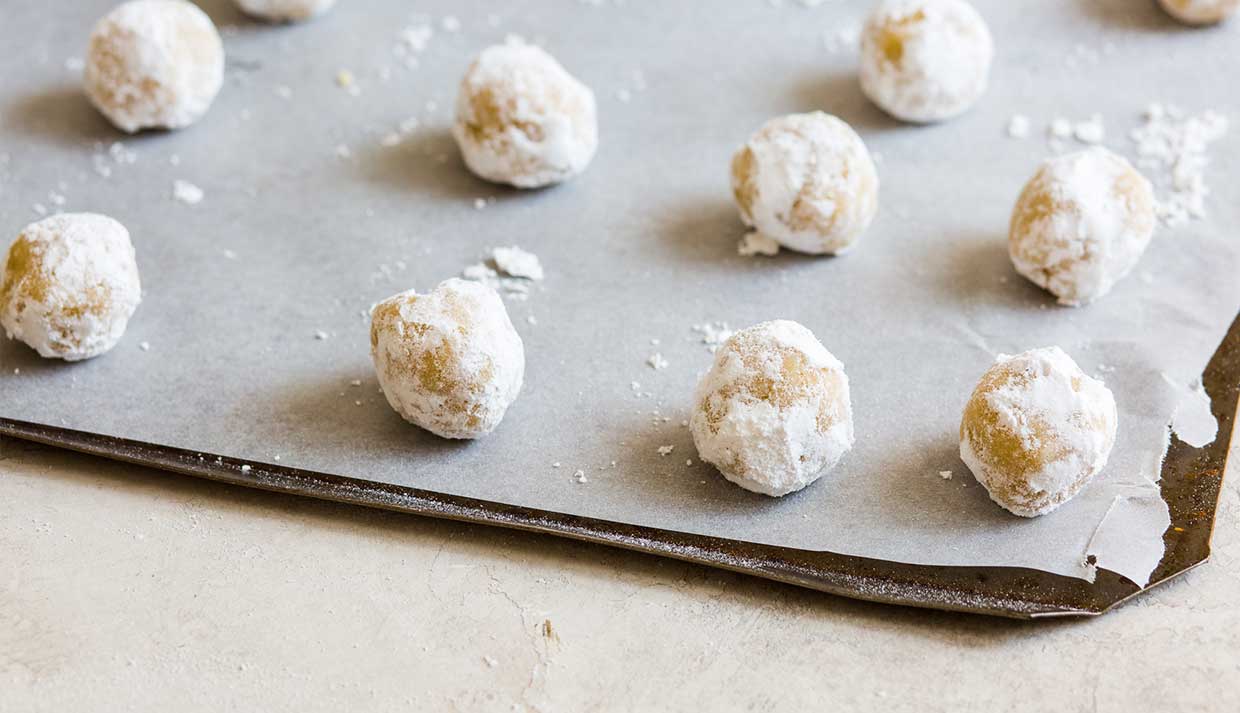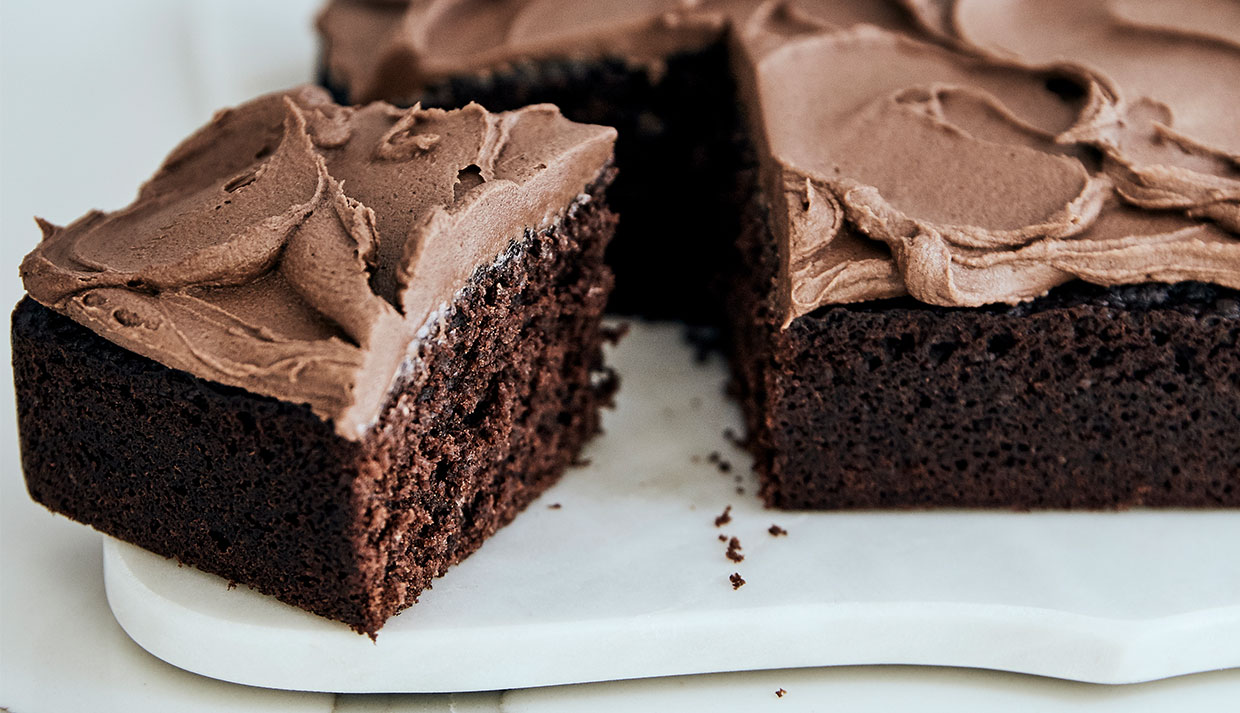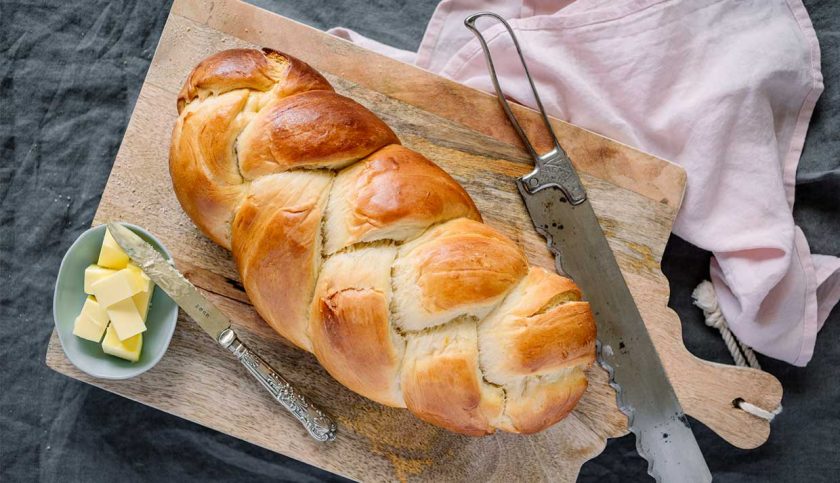Q: What’s the difference between plain flour and self-raising flour? Can I make my own self-raising flour?
A: Self-raising flour contains baking powder, whereas plain flour does not. It’s easy to make your own self-raising flour, simply add 2 tsp of baking powder to every cup (150g) of plain flour.
Q: How do I know if my baking powder is still fresh?
A: If it’s been a little while since your last baking adventure or the best before has rubbed off the packet, you can always double check by testing your baking powder with a little boiling water. Add a teaspoon of baking powder to a bowl and pour over some boiling water. If it bubbles, it’s still good to go.
Q: How do I know if my bicarb soda is still fresh?
A: Use the same test as above, but use vinegar or lemon juice instead of boiling water. If it fizzes rapidly, it’s still ok to use.
Q: Are baking powder and baking soda the same thing?
A: No, baking powder and baking soda are different ingredients and cannot be used interchangeably.
Q: Is baking soda the same ingredient as bicarb soda?
A: Yes, the terms baking soda, bicarbonate of soda and bicarb soda are often used interchangeably, but all mean the same thing. If in doubt, just keep your eye out for the word “soda”!
Q: What is the difference between baking powder and baking soda?
Bicarb soda or baking soda has one ingredient: sodium bicarbonate. When sodium bicarbonate comes into contact with acids, like buttermilk, lemon or vinegar, it creates carbon dioxide bubbles which leaven your cake by trapping these bubbles within the batter as it cooks.
Baking powder however, contains both sodium bicarbonate and an acid such as sodium acid pyrophosphate, which is needed to create the reaction to make CO2 bubble in the batter. While some initial reaction occurs when mixed into the batter, the real magic happens when heat is applied, triggering the activation of the acid.
Q: Can I use bicarb soda instead of baking powder?
A: No – since bicarb soda needs an additional acidic ingredient from your cake mix to activate, you cannot substitute it directly for baking powder. If you’re in a bind and it’s all you have: reduce the amount called for in the recipe by ⅔ and add an acidic ingredient to activate it in the same way as baking powder. Swap out or add one of the following: Swap milk for buttermilk, white sugar for brown sugar or add 2-3 tsp of vinegar or lemon juice to your batter.
Q: My recipe calls for espresso power or instant coffee, can I leave it out?
A: Most recipes, particularly chocolate recipes, call for a teaspoon or two of espresso powder. Why? To enhance the rich, earthy flavour profile of the chocolate. You can rarely taste the coffee in the final dessert, so if you’d prefer to leave it out, the good news is that an extra teaspoon or two of Queen Vanilla Extract works the same way!
Q: Why do I need to sift ingredients like flour and cocoa?
A: Flour is refined enough without the need for sifting in most recipes. However, sifted ingredients combine more easily with wet ingredients, meaning you won’t risk over mix your batter trying to get rid of those annoying last few lumps.
Sifting is an absolute must for sponge cakes as a cup of sifted flour vs a cup of un-sifted flour can vary by up to 30g, that’s almost a ¼ cup of flour! It’s always recommended you sift your flour (sometimes up to 3 times!) so you can create a super light sponge and so it is incorporated quickly and easily, without disturbing the aeration you worked so hard for.
Icing sugar and cocoa powder tend to absorb moisture when opened to the elements. This creates lumps that are very difficult to remove once added to your batter. Always sift these types of ingredients – it’s best not to risk it!
Q: What is the difference between Pure Maple Syrup and Maple Flavoured Syrup?
A: To put it simply, Pure Maple Syrup is made from pure maple tree sap, boiled down with nothing else added to create a delicious syrup. Maple Flavoured Syrup, however, is a mix of sugars and flavourings. If you’re after a true maple syrup, be sure to look out for the word “pure” on the label and check out the ingredients list. There should only be one: Pure Maple Syrup. If you want to know a little more about Queen Pure Maple Syrup, head here.
Q: What is the difference between Vanilla Extract and Vanilla Essence?
A: At Queen, Natural Vanilla Essence is Vanilla Extract. For a long time, the term ‘essence’ implied the natural concentrated form of Vanilla. Over time, the term ‘extract’ was used instead as a more modern description of pure vanilla. Here at Queen, we kept the word essence on our label so that long-standing customers can still recognise our Vanilla as the one they grew up with. This product is still a true Vanilla Extract made from premium quality Vanilla Beans. Lean more about Vanilla Extract here.
Q: Can I use glucose in place of corn syrup?
A: Glucose is an ideal substitute for corn syrup. Keep in mind that there is a slight difference in viscosity, so your batter or recipe may seem slightly thicker before baking. Have you got a jar of glucose that needs using up? Read our blog for ten ways to put it to good use!
Q: Which Vanilla should I use in my recipe? Extract, Paste or Pods?
A: Consistency and intensity are the most important things to consider when choosing the best vanilla for your recipe. The type of vanilla will also depend on whether your recipe is a low fat, high fat or low liquid recipe. Read more about how to choose the correct vanilla for your recipes here.
Q: Do I need to add vanilla to chocolate cakes?
A: Just like you add salt to your savory dishes to enhance the flavour, Vanilla works exactly the same way in baking! Adding a teaspoon or two to any cake or dessert elevates and enhances the flavours within the recipe. This is especially true for chocolate recipes, where Vanilla helps to balance and elevate the rich, earthy flavour profiles. It also works in a similar way for recipes containing fruit and fragrant spices.
Q: What is cake flour?
A: Cake flour is a low protein flour which is finer, lighter and softer than regular plain flour. Protein content is directly related to the amount of gluten that will form during baking. Higher protein flours = faster gluten development = tough cakes and cookies, especially if they are over-mixed. By choosing a cake flour your cake should come out super soft, fluffy and tender with a fine crumb and smaller air pockets.
Q: Can I make my own cake flour?
A: Cake flour isn’t always readily available, but the good news is – you can create something similar yourself! Simply replace 2 tablespoons in every 1 cup (150g) of plain flour with corn flour and sift up to 5 times to thoroughly incorporate and aerate the flour.
Q: What is baker’s or bread flour?
A: Baker’s flour is a high protein flour used in bread making. The protein helps to create as much gluten as possible, creating a deliciously elastic and chewy loaf of bread or pizza crust with large air pockets.
Have you got a burning baking question that we missed? Let us know in the comments below.
If you’d like to learn more about using our products, recipe inspiration, and tips for your best baking, head over to the Queen Blog to read more!
For monthly recipes delivered straight to your inbox, along with product information, competitions and special offers, be sure to join our Queen Baking Club.








Comments & Reviews
Thanks for the information about flour types – very useful
Judy
Is Dutch cocoa powder interchangeable with regular cocoa powder in your recipes?
Sonia
Hi Sonia! Cocoa contributes to the acidity in a chocolate cake, so the cocoa used can increase or decrease the leavening in the finished product. As a rule of thumb: natural cocoa powder is usually used for batters containing baking soda and dutch cocoa powder is usually used for batters containing baking powder.
You can use cocoa powder in place of dutch, but cannot use dutch in place of cocoa powder. Hope that helps 🙂 – The Queen Team
Queen Fine Foods